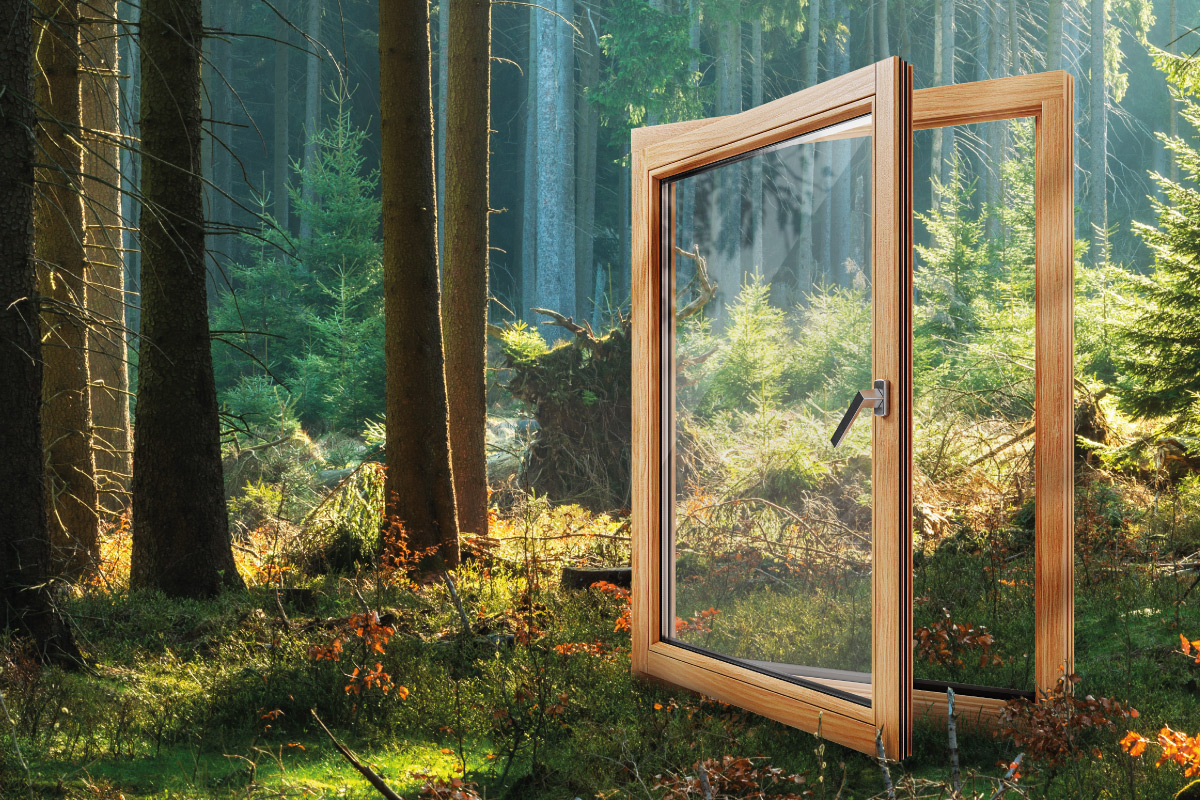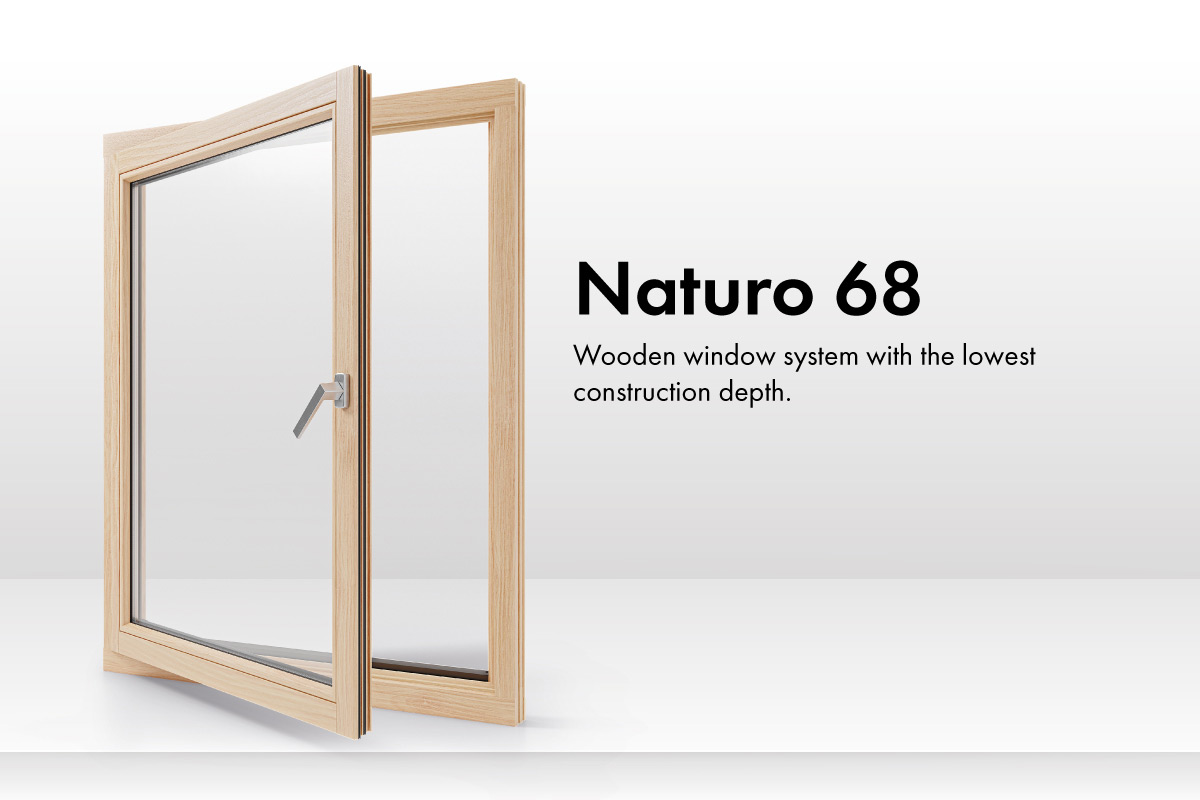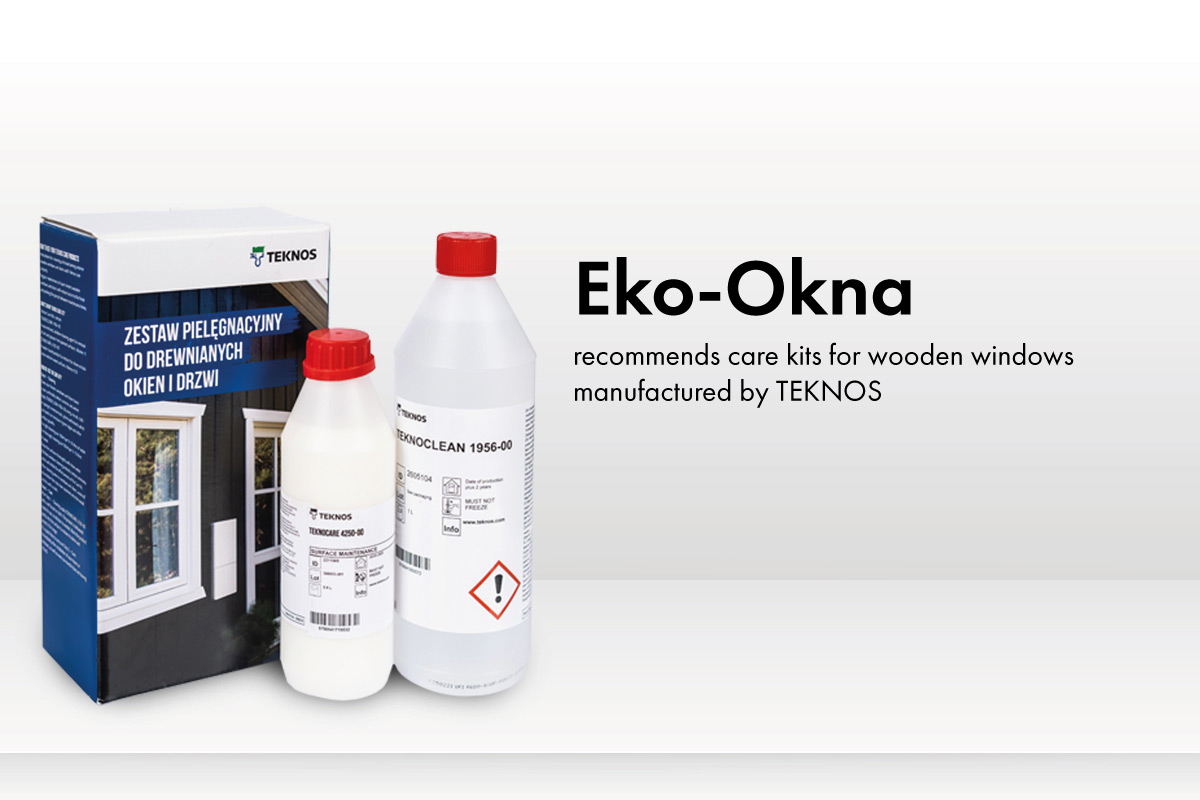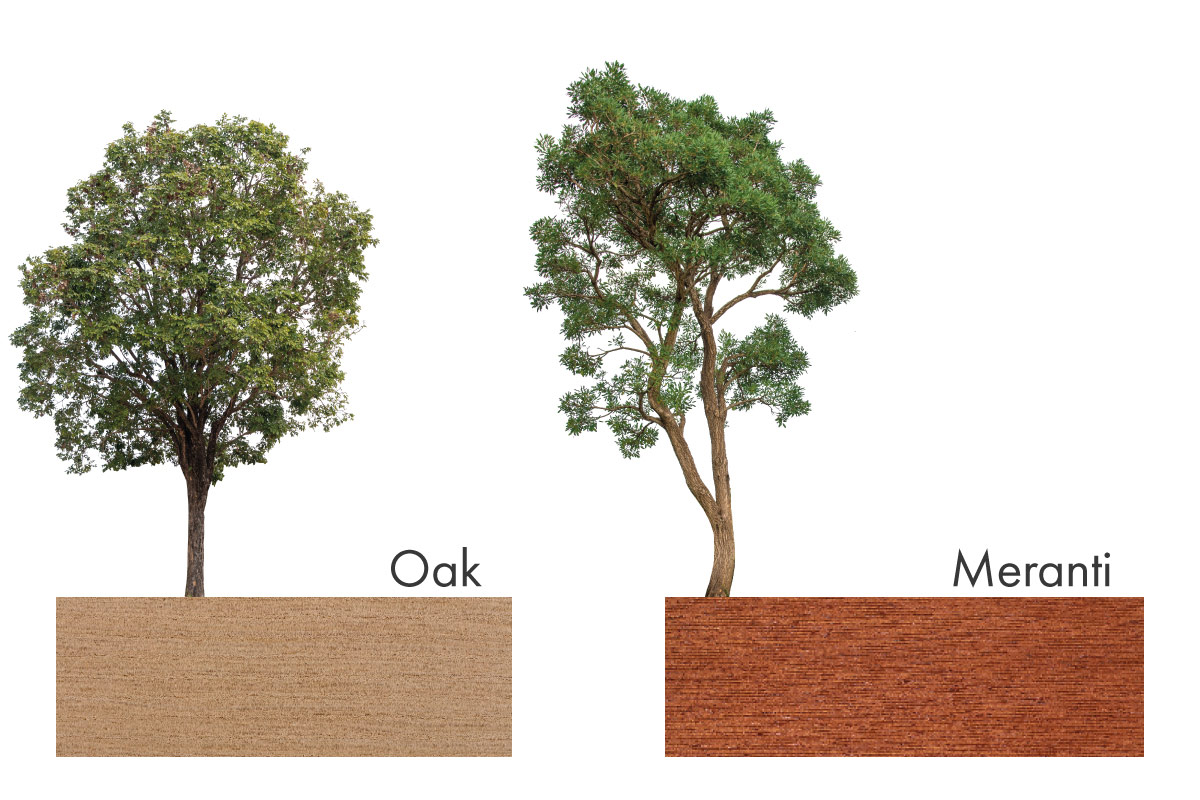25 October, 2023
Windows

We are witnessing a great return to wood in the joinery world, which mainly consists of wooden windows, doors, and sliding systems. The process is underway mainly due to their ecological and aesthetic qualities. Increasingly attractive prices and improving technical parameters of even mid-range products deserve much credit, too. However, the differences between wood species are crucial, and exhaustive knowledge is indispensable for making the optimal choice. After all, this is a decision for years to come.

Wooden joinery includes wooden windows, doors, and sliding systems, smaller or even those for an entire facade. Collectively, these products form one of the fastest-growing sectors of the wider construction industry today. They are the solution to many pressing problems facing investors constructing new buildings and all those managing flats, detached houses, and commercial buildings.
Wood products are characterised by superb performance as well as excellent aesthetics. They are warm, protect against noise, and, if well maintained, do not wear out quickly. At least not faster than the most common solutions. Not without significance is fashion, which, however, is of secondary importance here. Wood is a timeless material that always works in virtually all projects. All you have to do is choose the adequate option.

However, it is not that simple, as wood types vary drastically. The differences relate to their appearance and the technical parameters of the finished products, and even to their durability, thus maintenance requirements. The only thing that remains constant for each type of wood is the ecological aspect.
A wooden window is a symbol of a conscious consumer choice. It is a truly ecological product. This is a matter-of-fact statement.

Wood is a fully biodegradable material. It leaves nothing requiring a long time in the ground to decompose. Wood can also be recycled. When the windows are unable to fulfil their function anymore, they can become something else. The varnishes used in manufacturing wooden windows and doors are also safe. As a result, you do not have to worry about your carbon footprint or direct damage to nature.
You should pay attention to the origin of the wood itself. It must be FSC-certified. The FSC certificate (Forest Stewardship Council Certificate) is a guarantee by an independent institution that the wood was harvested in a way that protects nature and sensitive human communities, which is particularly important in the case of exotic kinds. For species sourced in Europe, the principal aspect of the FSC certificate is that the wood is sourced from industrial, unprotected forests, and new plants are introduced in place of felled trees.
When choosing wooden windows and doors, you must pick warm products. Warmth is as much an economic factor as an environmental one, as reduced energy consumption translates into less energy resources used. A lower amount of resources used means a lower bill for them and a smaller volume of greenhouse gases emitted into the atmosphere.
This logic supports choosing popular Polish wood species, i.e. pine and spruce. It is worth noting that for the production of windows available on the domestic market, wood is sourced not only in Poland but also in neighbouring countries, especially Czechia and Slovakia. Among prolific producers, there are also Scandinavian countries. Russia lost its markets due to political issues.

Pine is by far the most popular wood for windows. These windows exhibit excellent thermal and acoustic performance. Processing this type of wood is relatively simple, so the prices of the final products are reasonable. Their durability is satisfactory. These properties make pine the best value-for-money product.
Pine windows are popular due to the subdued colour of the raw material, which, when combined with transparent varnishes, makes it easy to get delicate bright colours. It widens the range of options available to developers, architects, interior designers, and investors in general. Some meranti varieties have a similar feature.
People value spruce for its appearance. It lends itself excellently to impregnation and varnishing, letting you achieve an extensive range of colours. An intriguing characteristic of spruce doors and such joinery components is their high resistance to acids and alkalis. Thanks to this, you can use spruce in many less typical situations. The affordability associated with the wide availability of large quantities of raw materials is an irrefutable argument for choosing this option.
It is interesting to note that spruce wood is invariably popular in the world of carpentry in the broadest sense. Although people employ it relatively rarely for joinery, it finds more frequent use in applications like flooring, and people typically utilise it in the construction of packaging materials, such as crates, boxes, and pallets.

An important parameter describing wooden windows, or rather the wood from which they are made, is density or weight per unit mass. For oak, this is 700-800 kg/m3. For spruce or pine, this value is approximately 400-500 kg/m3 (for wood dried after felling). This is significant because the density of wood is directly proportional primarily to its thermal and acoustic parameters and affects its resistance to compression and bending. Denser wood means warmer and thinner profiles (with bigger glazing).
Oak is a noble wood valued for its appearance, but beauty does not have to be the opposite of utility. Oakwood excels in passive houses and anywhere where energy saving, noise protection, and even maximising glazing size are priorities. The main barrier to the broader use of such wood is, first and foremost, the cost of this prestigious solution compared to alternative options.
Meranti is still a relatively unknown wood species in our country but is rapidly gaining popularity. It originates from East Asia and typically arrives in Poland from Thailand and Indonesia. Some come from other places, too.
There are several varieties of meranti wood, with White being the most popular one. Dark and Majau varieties are widely prized, and the Red Meranti looks deceptively like mahogany, one of the most desirable wood types by far, even though it is far less taxing on the investment budget than the original.
In terms of performance, meranti is somewhat inferior to wood types considered more noble. While it is not on par with oak, it doesn't fall too far behind. In terms of density, depending on the quality of the raw material, meranti ranks about halfway between pine and oak or slightly closer to noble woods (depending on the type). Its great advantage is its even structure, which lends itself excellently to varnish coatings, making it possible to create not only windows or doors but even entire facades.
Of course, the above are not all the wood species available on the Polish market. Larch, for example, enjoys an important position. Beech and alder, among others, are also used. The discussed wood species are proposals, among which most people choosing wooden windows, doors, or sliding systems should be able to find the perfect option for themselves.

Hotline: +48 539 697 779 Connection fee in accordance with the operator`s price list.
Eko-Okna S.A.
Kornice, ul. Spacerowa 4
47-480 Pietrowice Wielkie
NIP: 6391813241, KRS: 0000586067